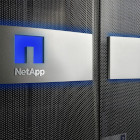This post is part of a multi-part series on how to use NetApp storage
platforms to present persistent volumes in Kubernetes. The other posts in this series
are:
Kubernetes is an open source project for automating deployment, operations, and
scaling of containerized applications that came out of Google in June 2014. The
community around Kubernetes has since exploded and is being adopted as one of
the leading container deployment solutions.
A problem many run into with using containerized applications is what to do
with their data. Data written inside of a container is ephemeral and only exist
for the lifetime of the container it’s written in. To solve this problem,
Kubernetes offers a PersistentVolume subsystem that abstracts the details of
how storage is provided from how it is consumed.
The Kubernetes PersistentVolume API provides several plugins for integrating
your storage into Kubernetes for containers to consume. In this post, we’ll
focus on how to use the NFS plugin with ONTAP. More specifically, we will
use a slightly modified version of the NFS example
in the Kubernetes source code.
Continue reading
